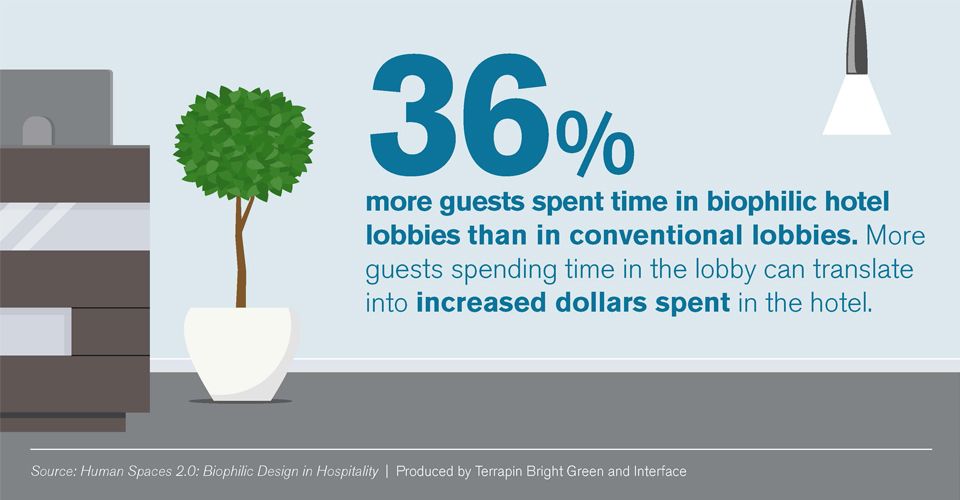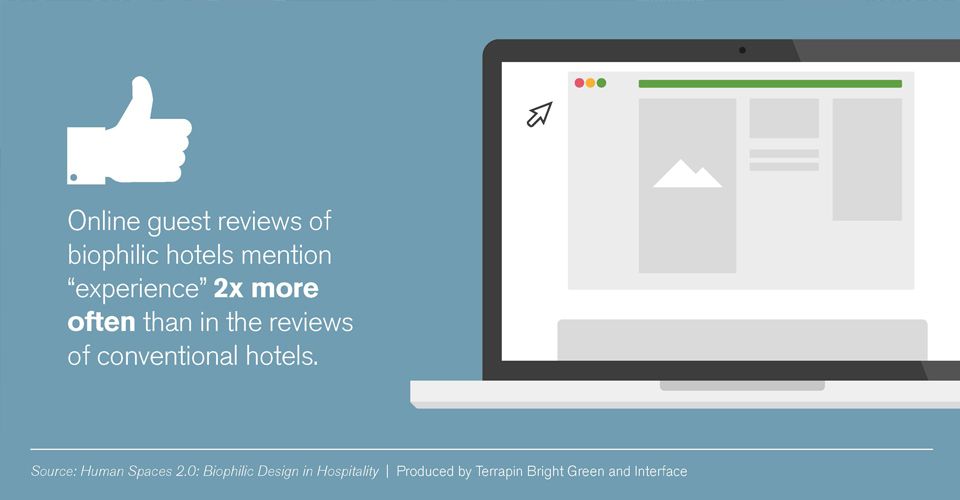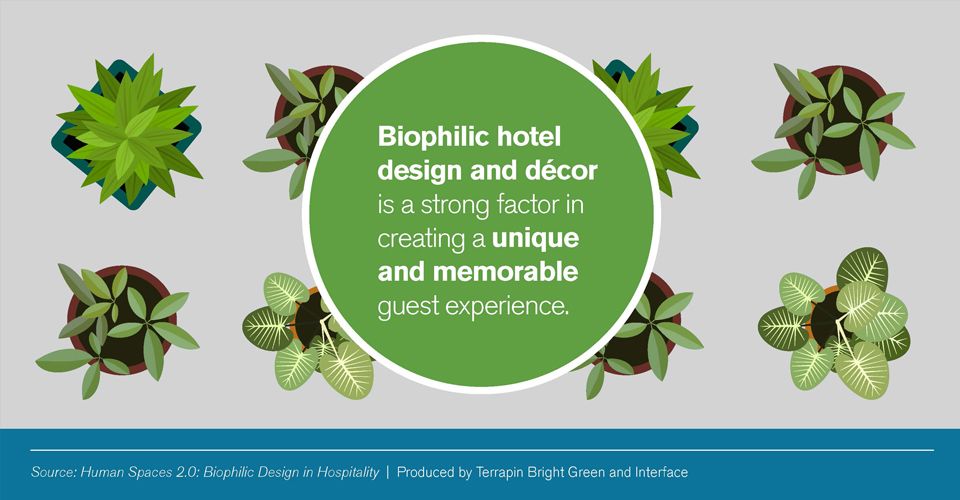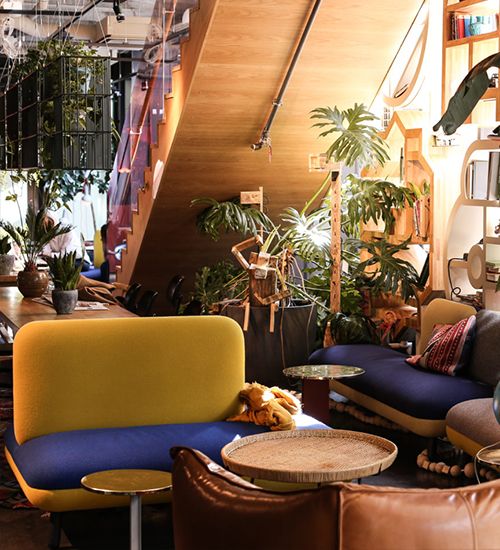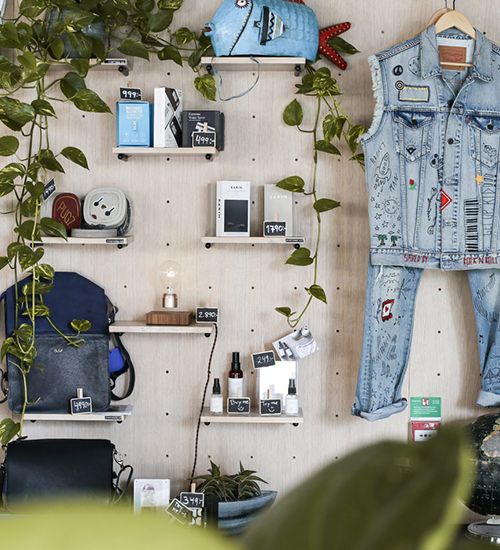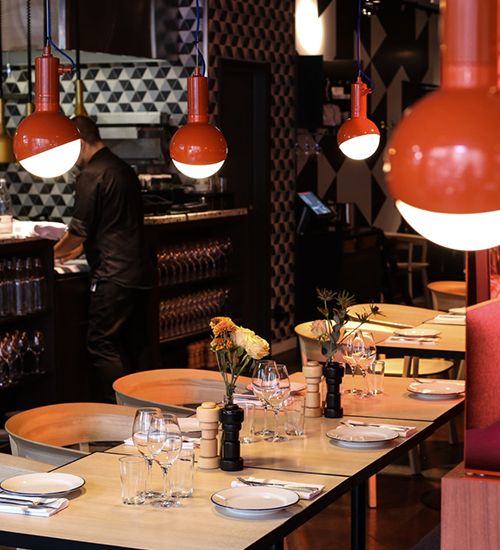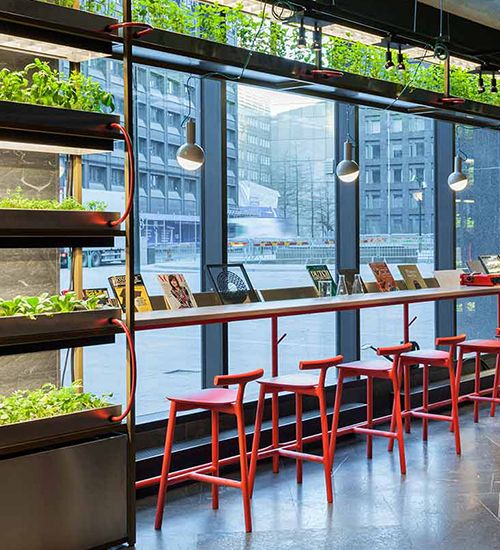Biophilic Design interventions play a key role within many hospitality spaces. They can help us to relax, sleep better and feel happier – so much so that we’re willing to pay significantly more for a room with a high presence of biophilia (even if we don’t realise that that’s what we’re paying for!) A room with a view, for example, will always cost more than a room without.
The human spaces report “Biophilic Design in Hospitality” demonstrates the financial benefits of incorporating biophilic design into hotel spaces. They suggest that both urban and resort hotels around the world charge a premium for rooms with a water view by comparison to rooms with other views (18.28% more for a resort hotel and 11.17% more for an urban hotel1. Furthermore, they suggest that biophilic design interventions within hotels change the behaviour of occupants and increase the potential uses for some hotel spaces. This is important as hospitality spaces are looking for new ways to bring in revenue, (without the need for delivering a room for the night) whilst strengthening local connections to create a greater sense of place and identity.
Hotel lobbies with a high presence of biophilic design, it was found, had a far higher rate of occupation and use. Such spaces especially promoted higher levels of social activity (11% higher than in a biophilia free space!)2 Several hotels appear to be picking up on trends regarding sociability and community within biophilic spaces and developing their lobbies to further encourage their use – not just by clients but members of the wider community.
Hotels are starting to absorb elements of a flexible working environment, through the incorporation of co-working spaces – often stating that they hope to build a network of connections and foster a greater sense of community. Biophilic design has been shown to encourage more sociable use of hospitality spaces and can, in such cases play a key role in improving a sense of community and allowing people to work and communicate effectively.
Developing a sense of community and comfort is vital in promoting health and wellbeing. The UK’s National Health Service outlines ‘5 steps to mental wellbeing’, identifying connecting with the people around us as first on the list.3 And it works both ways – whilst community can enhance wellbeing, wellbeing also enhances community. We interact in a more positive way with others if we “feel good.”4
There are multiple examples of hotels incorporating biophilic design within multifunctional work/ lifestyle spaces to enhance community. One fascinating example is Hobo in Stockholm:
Hobo, Stockholm ; https://hobo.se/gallery/
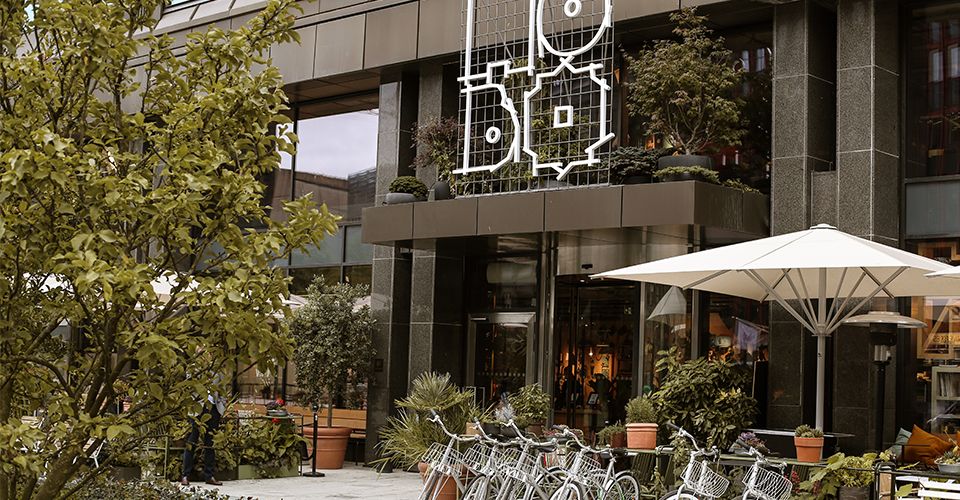
Image ©Hobo Hotel
Hobo, designed by Studio Aisslinger, markets itself as ‘a meeting point, a workplace, an office or just a nice place to visit and hang out.’ It contains several floors of social space incorporating a restaurant, bar, event space, pop-up areas for use by local emerging artists and designers. Based around open, loft like spaces all social areas are easily accessible by the public encouraging the use of communicative and inviting seating areas throughout.
The hotel design features several biophilic elements which help to encourage community growth.
Firstly, a diverse range of spaces within each area of the hotel ensures that there are environments available for different needs, preferences and activities. Within nature an ecosystem with great diversity is more resilient with each element fulfilling a different role.5 Similarly, a variety of spaces encourages people to comfortably accommodate their role. It allows them to gather whilst also allowing for individuals needs to step away in small groups or to be by themselves to recharge.
This works alongside a clear sense of zoning within the hotel. Whilst there is flexibility in the design, the use of materials, furnishing and colours make clear which areas are associated with specific activity. Zoning makes the use value of a space clear and easily identifiable, helping to make people feel confident and comfortable in their choice of activity. In evolutionary terms, we feel less stressed when we understand the benefits of a space (a refuge space for example will hide us from threat, allowing us to relax).
Soft boundaries between each of these zones is a further, nature inspired trick to encourage communication between hotel occupants. Lots of the spaces in Hobo are open plan and use rugs, textures, materiality and colour to imply boundaries. By ensuring that an interior environment isn’t closed in, it’s possible to increase the permeability of different zones and allow occupants to comfortably move from one space to another. Some boundaries are helpful in creating emotional safety and allowing people to communicate in comfort6, however, softer boundaries really help to reduce feelings of separation encouraging groups to gather and interact.
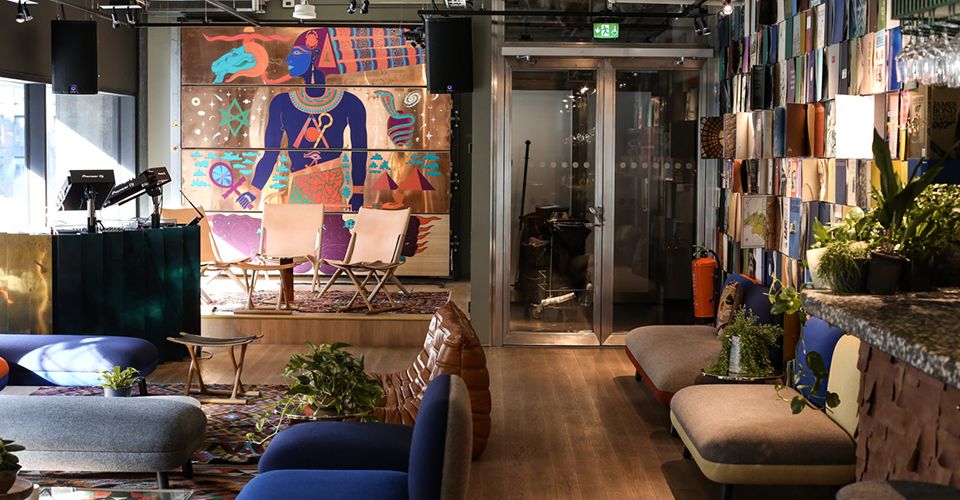
Image ©Hobo Hotel
By incorporating soft seating which can be moved around in several areas, Hobo allows occupants to adapt layouts to their requirements. It is thought that allowing people a level of control over their physical environment (an ability to adjust their level of privacy for example) makes them feel like a valued member of the community and therefore encourages open communication.7
Importantly, in biophilic terms, Hobo creates a rich sensory environment for inhabitants. This helps to encourage occupation of social space by ensuring that senses such as touch, scent and sound are all considered. High levels of planting and soft furnishings ensure that softens acoustics and seating can often be moved to allow for a quiet conversation to take place. Warm, tactile materials such as timber, stone and woven fabrics have been included and help to make occupants comfortable. From an evolutionary perspective we are used to rich, sensory landscapes and feel most at ease amongst areas of textural contrast high in sensory information.
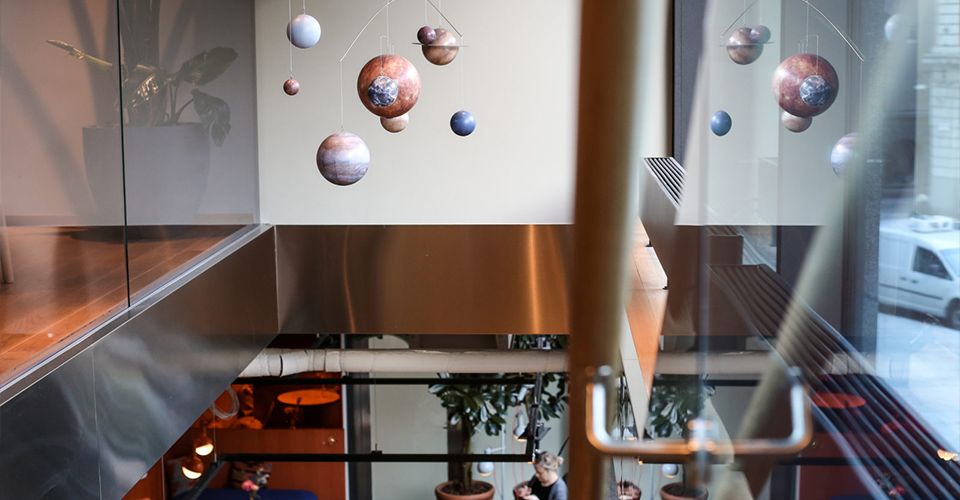
Image ©Hobo Hotel
Finally, a biophilic trick that we call Triangulation – a point of focus within an area which fascinates and brings people together. In nature such things would be a body of water or fire, but Hobo has created a manmade alternative. Their start up space SPACEby acts as a pop-up exhibition space for local artists and designers, bringing people together to explore an ever-changing installation. This fosters a series of new relationships and connections and encourages people to use the hotel whether they are staying there or not.
Image ©Hobo Hotel
Image ©Hobo Hotel
Image ©Hobo Hotel
Image ©Hobo Hotel
Image ©Hobo Hotel
Image ©Hobo Hotel
References
1 Human Spaces 2.0: Biophilic Design in Hospitality
2 Human Spaces 2.0: Biophilic Design in Hospitality
3 https://www.nhs.uk/conditions/stress-anxiety-depression/improve-mental-wellbeing/
4 Isen, A. M., & Levin, P. F. (1972). Effect of feeling good on helping: cookies and kindness. Journal of personality and social psychology, 21(3), 384.
5 Kellert’s Biophilic Theory : Direct Experience of Nature: Natural Landscapes and Ecosystems
6 Ehrlich, J. J., & Graeven, D. B. (1971). Reciprocal self-disclosure in a dyad. Journal of Experimental Social Psychology
AND Wood, H. G. (1971). An analysis of social sensitivity. Dissertation Abstracts International, 32(2-B), 1200
7 https://hbr.org/2014/10/rules-for-designing-an-engaging-workplace?referral=03759&cm_vc=rr_item_page.bottom
